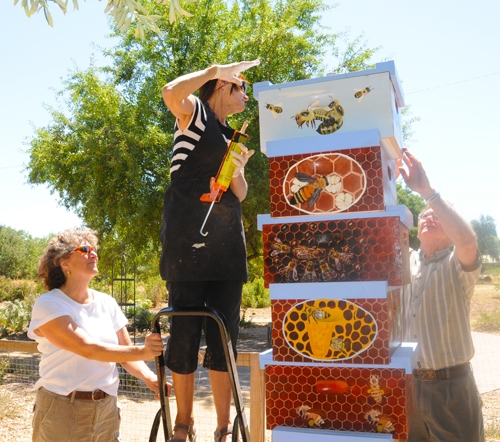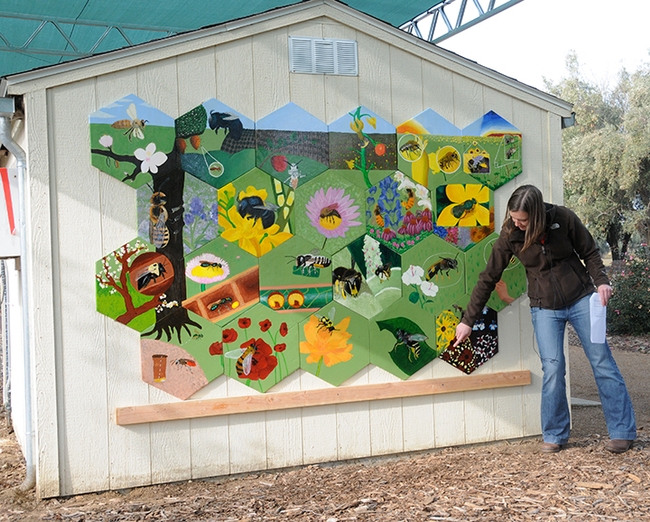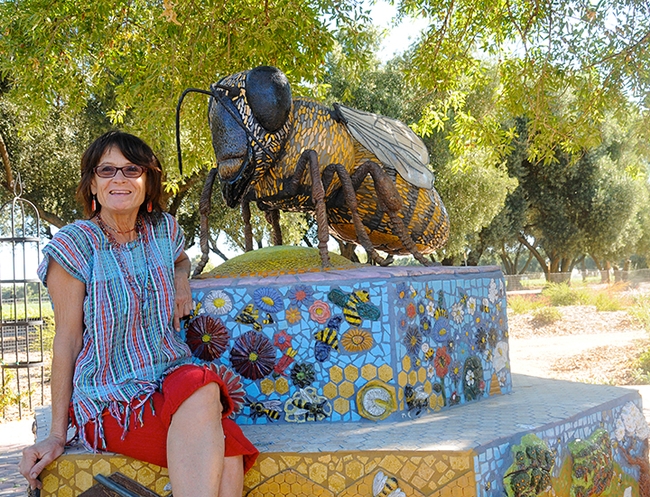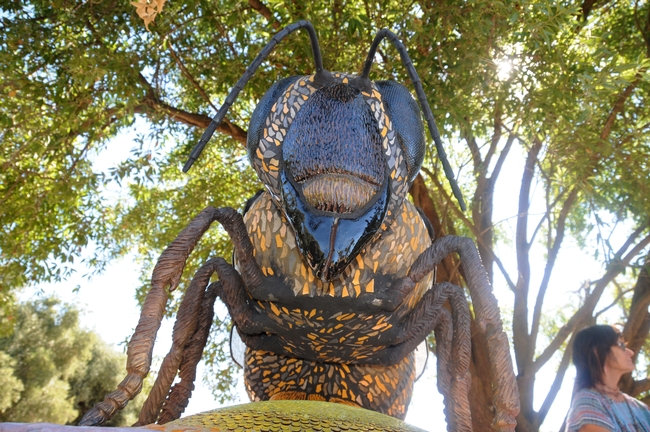
But the event also will include several tours to museums or collections.
One of the tours will be to the UC Davis Bee Haven, a half-acre bee demonstration garden located next to the Harry H. Laidlaw Jr. Honey Bee Research Facility on Bee Biology Road, west of the central campus.
Honey bees and native bees, as well as butterflies, dragonflies and other insects, frequent the garden.
The Haven staff will offer tours at noon and at 2 p.m., with a limit of 20 people per tour. "We'll focus on how best to observe and identify bees in the garden, as well as suggested bee plants that grow well in our area with low water," said Christine Casey, academic program management officer of the Bee Haven.
The garden, operated and maintained by the UC Davis Department of Entomology and Nematology, was installed in the fall of 2009 when professor Lynn Kimsey, director of the Bohart Museum of Entomology headed the department as interim chair. The art featured in the garden is the work of the UC Davis Art/Science Fusion Program, co-founded and co-directed by entomology professor/artist Diane Ullman and self-described "rock artist" Donna Billick. A six-foot-long ceramic-mosaic bee sculpture, crafted by Billick, anchors the garden. Columns of ceramic-mosaic bee boxes flank the entrance. Other sculptures beautify the garden as well.

Another project, supervised by Ullman and Billick in 2011 and coordinated by then doctoral student Sarah Dalrymple of the Rick Karban lab, features a mural of mostly native bees on the garden shed.
Background: Ullman and Billick were teaching an Entomology 1 class, "Art, Science and the World of Insects," with 22 students enrolled. Dalrymple, the teaching assistant, guided the students in the design, creation and installation of the panels.
The 22 students portrayed 22 bees, including such natives as mason, sweat, squash, leafcutter, blue orchard, carpenter and bumble bees. One of the non-natives: the European wool carder bee.
The UC Davis Bee Haven is in the midst of raising funds to finance classroom visits from low-income schools, and visits by youth groups. The fundraising project, with a goal of $3000, ends at 12:59 p.m., Feb 28. View Casey's ;YouTube video and access the Haven website. The CrowdFund site is at https://crowdfund.ucdavis.edu/project/29773
The bee garden is open daily from dawn to dusk except for Tuesdays (opens at 10 a.m.) "so we can maintain physical distance during garden maintenance," Casey says. Admission is free.
Resource:
Attached Images:

In 2011, then UC doctoral student Sarah Dalrymple (shown) coordinated the bee mural in the UC Davis Bee Haven. It mostly features native bees. (Photo by Kathy Keatley Garvey)

Self-described "rock artist" Donna Billick poses with her sculpture, "Miss Bee Haven," which anchors the UC Davis Bee Haven. (Photo by Kathy Keatley Garvey)

Close-up of "Miss Bee Haven," a six-foot-long sculpture of a worker bee by noted artist Donna Billick of Davis. (Photo by Kathy Keatley Garvey)

A honey bee forages on a manzanita "Howard McMinn" Arctostaphylos in the UC Davis Bee Haven. (Photo by Kathy Keatley Garvey)